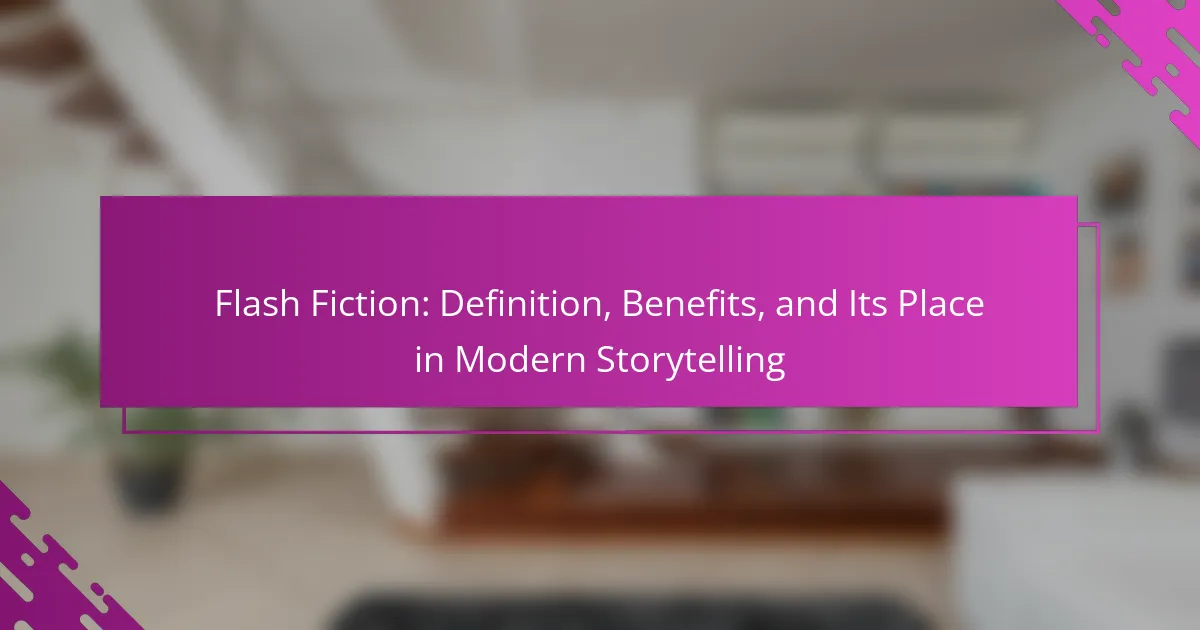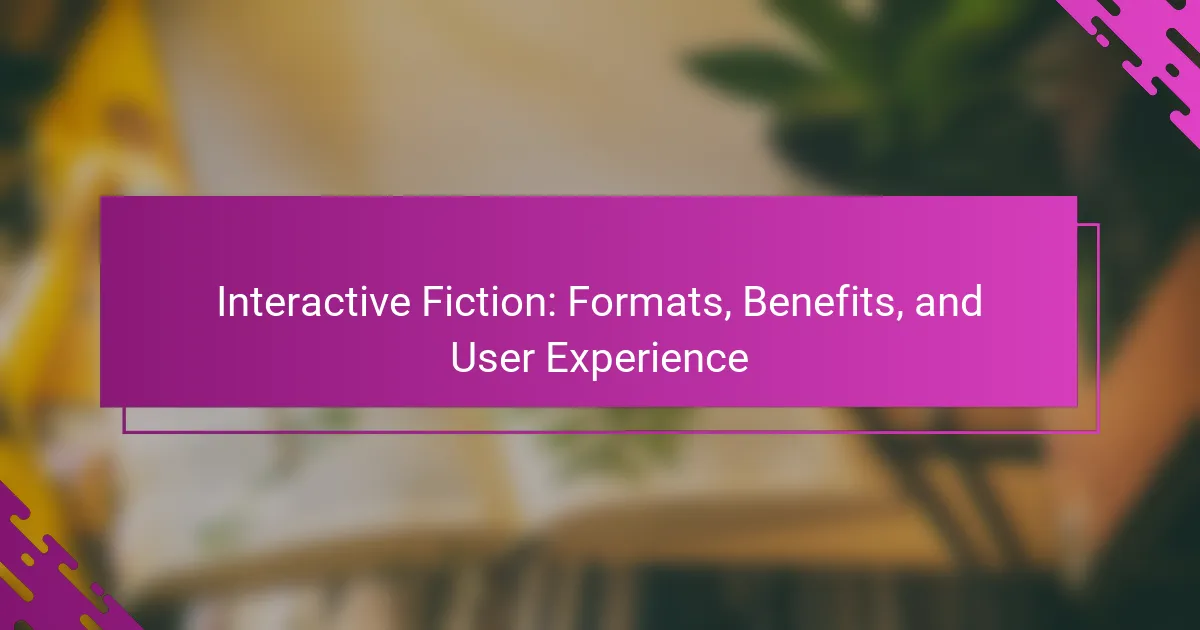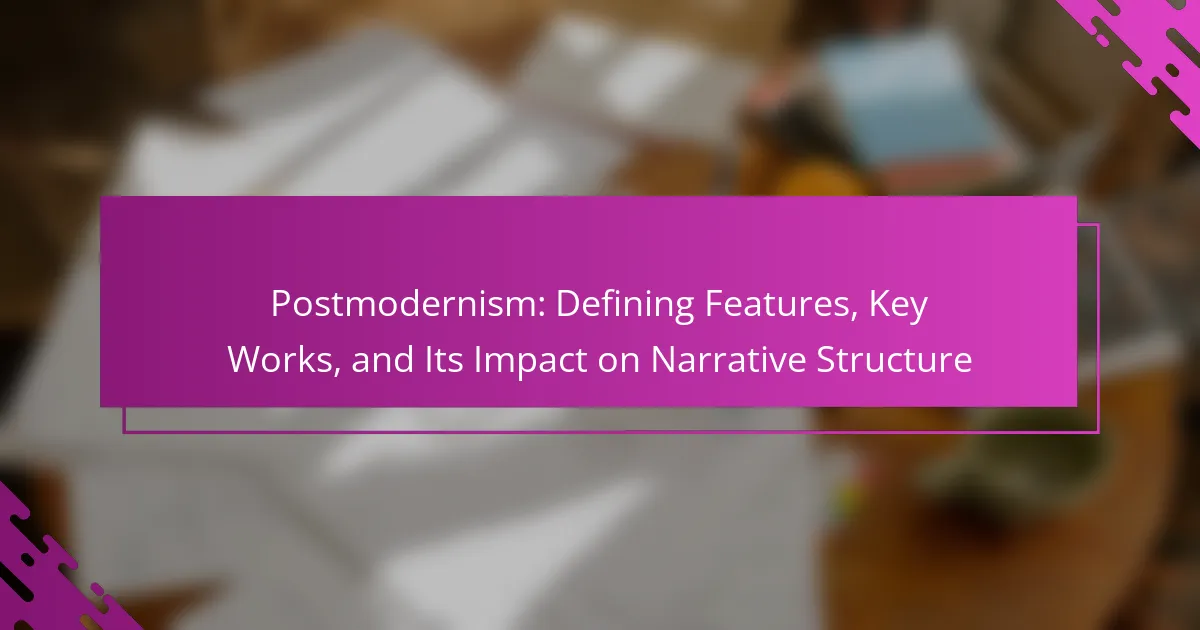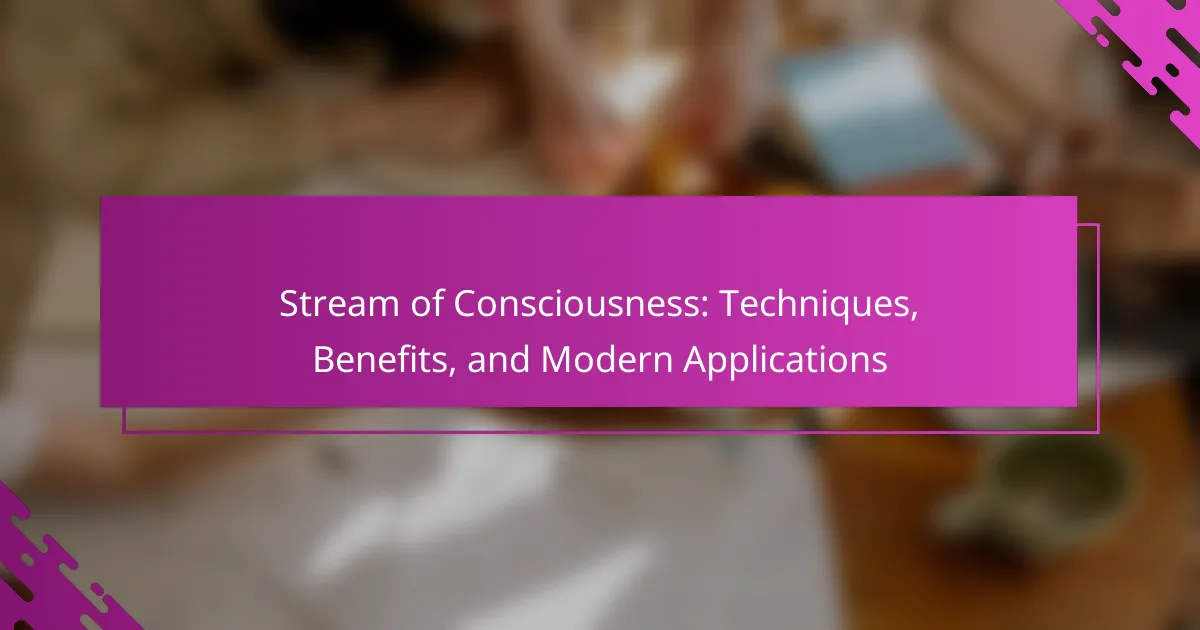Hypertext fiction enhances reader engagement through its non-linear structure and interactive storytelling. It allows for personalized narrative experiences and influences digital storytelling trends. This article explores the benefits of hypertext fiction, its impact on modern narratives, and the challenges faced by creators in this innovative genre. Notable works and strategies for effective hypertext storytelling will also be discussed.

What defines hypertext fiction?
Hypertext fiction is defined by its non-linear structure, allowing readers to navigate through interconnected narratives. This format enhances engagement and interactivity, offering unique storytelling experiences. It influences digital storytelling by enabling diverse paths and outcomes, reflecting the complexity of human thought. Hypertext fiction often blurs the lines between author and reader, fostering a collaborative narrative environment.
How does hypertext fiction differ from traditional storytelling?
Hypertext fiction differs from traditional storytelling by allowing non-linear narratives. Readers can choose their path through interconnected texts, enhancing engagement and interactivity. This format encourages exploration and personal interpretation, which contrasts with the fixed structure of traditional narratives. Hypertext fiction’s unique attribute is its reliance on digital platforms, enabling multimedia integration and dynamic storytelling experiences.
What are the key elements of hypertext fiction?
Hypertext fiction incorporates nonlinear narratives, interactivity, and reader choice. Key elements include links that connect various texts, enabling exploration of multiple story paths. This format enhances engagement and offers personalized reading experiences, allowing readers to shape their narratives. Additionally, hypertext fiction often challenges traditional storytelling by blurring the lines between author and reader, fostering a collaborative narrative creation process.
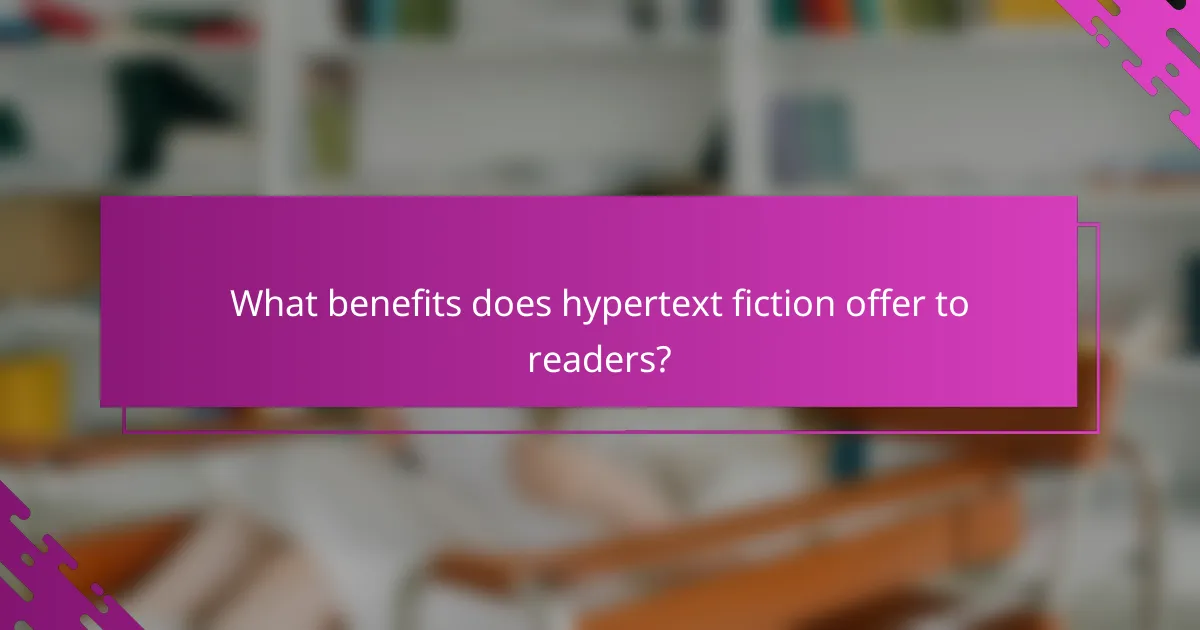
What benefits does hypertext fiction offer to readers?
Hypertext fiction enhances reader engagement, promotes non-linear exploration, and fosters interactive storytelling. These benefits encourage deeper immersion and personal interpretation. Readers can navigate through multiple pathways, making the experience unique and tailored to individual preferences. This form of storytelling challenges traditional narrative structures, inviting creativity and critical thinking.
How does interactivity enhance reader engagement?
Interactivity significantly enhances reader engagement in hypertext fiction by allowing readers to make choices that influence the narrative. This participatory aspect fosters a deeper emotional connection and investment in the story. Readers become active participants rather than passive consumers, which can lead to increased satisfaction and retention. Hypertext fiction’s structure encourages exploration and discovery, making the reading experience more dynamic and personalized.
What role does non-linearity play in narrative experience?
Non-linearity enhances narrative experience by allowing readers to choose their own paths through the story. This interactivity fosters deeper engagement and personal connection to the narrative. Hypertext fiction exemplifies this, offering multiple storylines and endings based on reader choices. As a result, it transforms traditional storytelling by emphasizing reader agency and exploration.
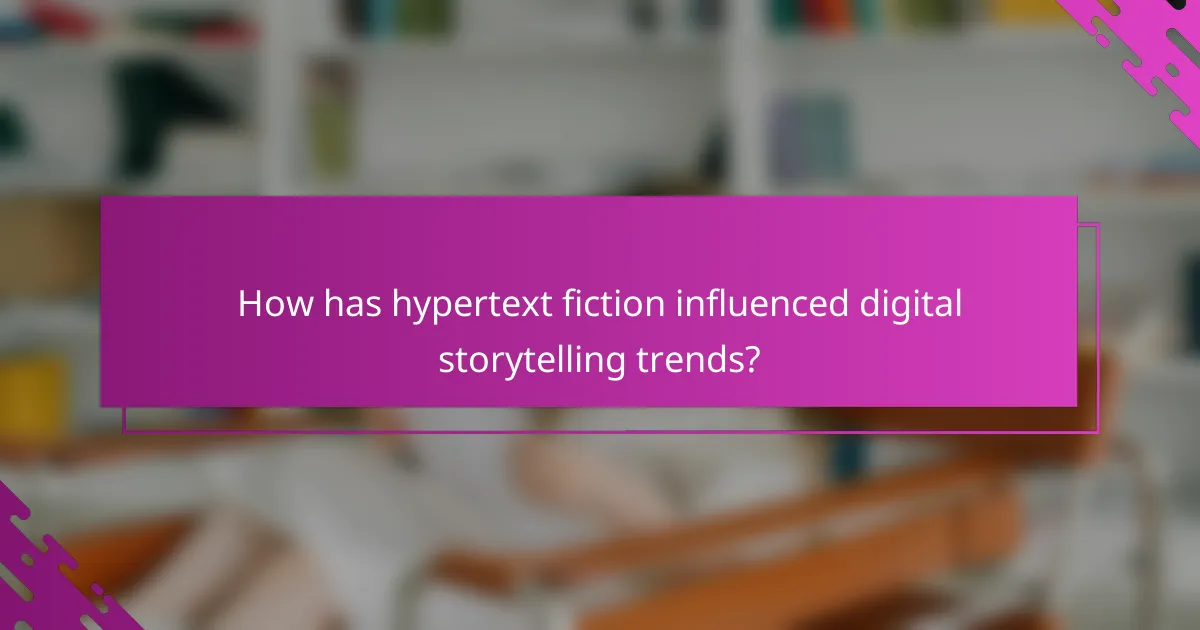
How has hypertext fiction influenced digital storytelling trends?
Hypertext fiction has significantly shaped digital storytelling trends by promoting interactivity and nonlinear narratives. This genre allows readers to navigate through multiple story paths, enhancing engagement. As a result, digital storytelling has evolved to incorporate similar structures, encouraging user participation and personalized experiences. The unique attribute of hypertext fiction is its ability to create immersive worlds where choices impact outcomes, influencing modern digital narratives across various platforms.
What are the emerging platforms for hypertext fiction in 2025?
Emerging platforms for hypertext fiction in 2025 include interactive storytelling apps, virtual reality environments, and AI-driven narrative tools. These platforms enhance user engagement and offer unique narrative experiences. Interactive storytelling apps allow readers to influence plot outcomes, while virtual reality environments create immersive worlds. AI-driven tools personalize narratives based on user preferences, making stories more dynamic and responsive. As these technologies evolve, they will shape the future of digital storytelling significantly.
Which authors are pioneering hypertext fiction today?
Contemporary authors pioneering hypertext fiction include Shelley Jackson, known for “Patchwork Girl,” and Michael Joyce, recognized for “Afternoon, a story.” Their works explore nonlinear narratives and interactive storytelling, pushing the boundaries of traditional literature. Other notable figures are Stuart Moulthrop, who created “Victory Garden,” and J. R. Carpenter, acclaimed for her innovative digital narratives. These authors significantly influence digital storytelling through their unique approaches to hypertext.
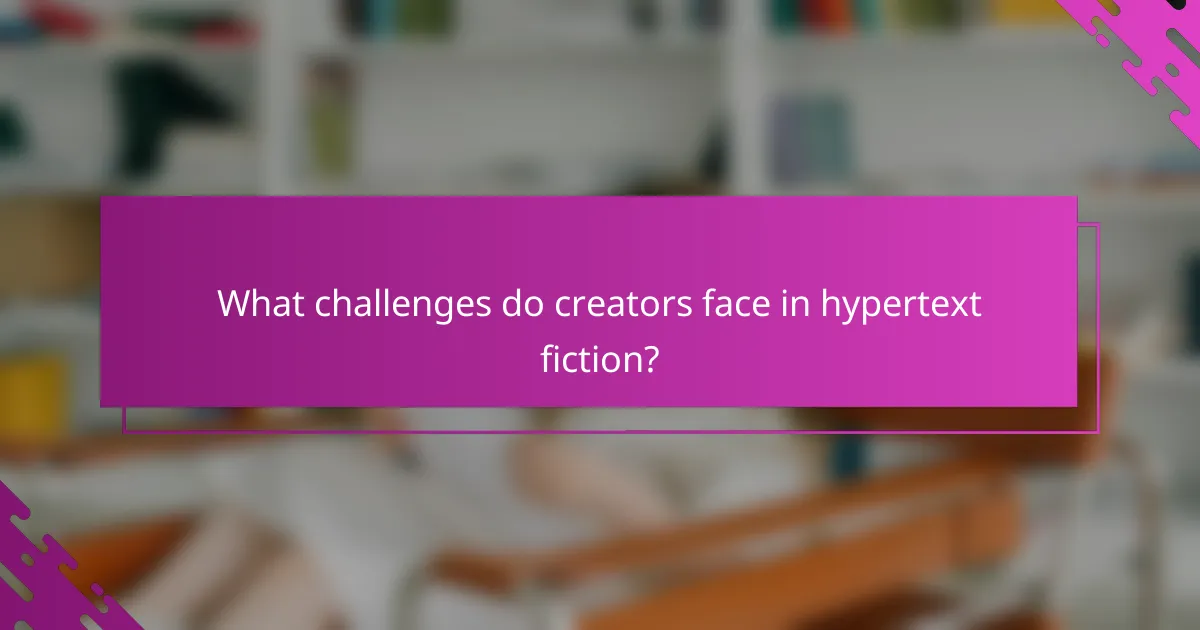
What challenges do creators face in hypertext fiction?
Creators in hypertext fiction face challenges such as nonlinear narrative structures, reader engagement, and technical limitations. Nonlinear storytelling can confuse readers unfamiliar with this format. Maintaining engagement is difficult as readers may abandon stories if navigation feels cumbersome. Additionally, creators often encounter technical issues, including platform constraints and compatibility across devices, hindering the intended experience. These challenges require innovative solutions to enhance storytelling while ensuring accessibility and user satisfaction.
How can technical limitations affect storytelling?
Technical limitations can hinder storytelling by restricting interactivity and narrative complexity. Hypertext fiction thrives on non-linear storytelling, allowing readers to choose their paths. However, limitations in technology can affect the seamless integration of multimedia elements, impacting engagement. For example, slow loading times can disrupt the flow of a story, reducing immersion. Additionally, compatibility issues across devices may limit audience reach, making it difficult for creators to fully realize their vision. These constraints can ultimately stifle creativity and innovation in digital storytelling.
What common pitfalls should writers avoid?
Writers should avoid common pitfalls such as excessive complexity, lack of interactivity, and ignoring audience engagement. These issues can hinder the effectiveness of hypertext fiction. Overly complicated narratives can confuse readers, while insufficient interactivity may not fully leverage the medium’s potential. Additionally, failing to consider the audience’s preferences can lead to disengagement.
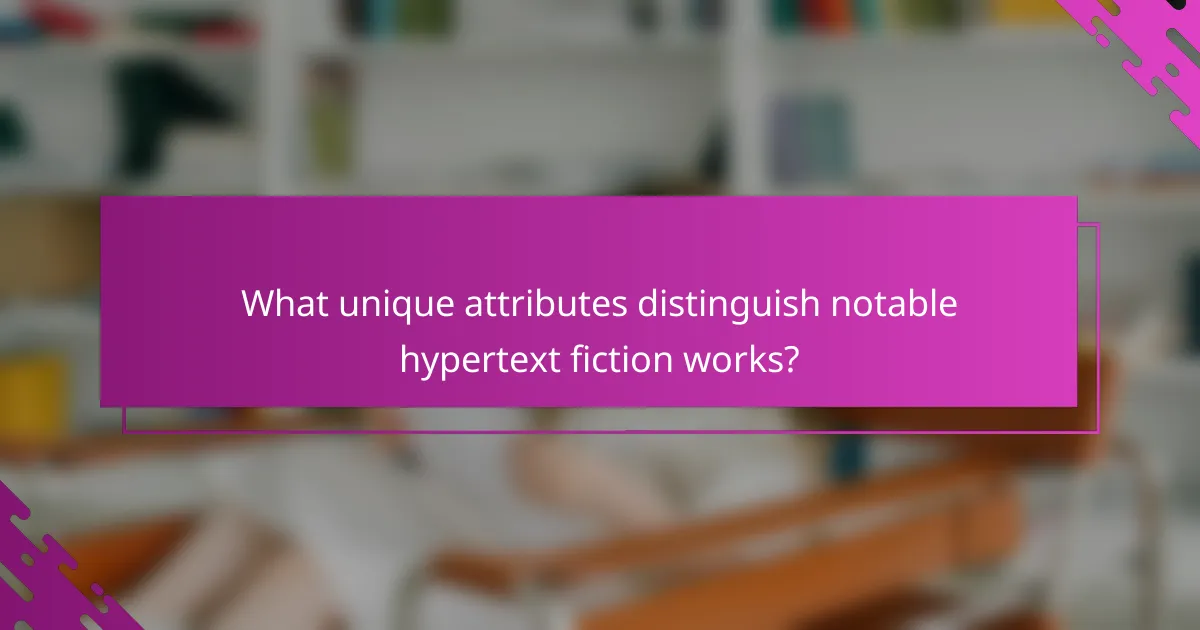
What unique attributes distinguish notable hypertext fiction works?
Notable hypertext fiction works are distinguished by their non-linear narratives, reader-driven paths, and interactive elements. These unique attributes create immersive experiences that engage audiences in ways traditional storytelling cannot. For example, “Afternoon, a story” allows readers to choose different narrative routes, enhancing personal investment in the story. Additionally, hypertext fiction often incorporates multimedia elements, such as images and sounds, enriching the narrative experience. This blend of text and technology exemplifies the innovative nature of digital storytelling.
How do cultural contexts shape hypertext narratives?
Cultural contexts significantly influence hypertext narratives by shaping themes, structures, and reader engagement. Different cultures bring unique storytelling traditions, which affect how hypertext fiction is created and interpreted. For instance, collectivist cultures may emphasize community and shared experiences, leading to narratives that encourage collaboration among readers. In contrast, individualistic cultures might focus on personal journeys, allowing for more solitary exploration of the narrative.
Moreover, cultural symbols and references embedded within hypertext can enhance relatability and immersion for specific audiences. The use of multimedia elements, like visuals and sounds, can also reflect cultural aesthetics, further enriching the narrative experience. As a result, hypertext fiction becomes a dynamic medium that reflects and adapts to diverse cultural landscapes, fostering a deeper connection between the text and its readers.
What innovative storytelling techniques are used in acclaimed hypertext fiction?
Acclaimed hypertext fiction employs innovative storytelling techniques such as non-linear narratives, reader-driven pathways, and multimedia integration. These techniques enhance engagement and allow for personalized experiences. Non-linear narratives enable exploration of multiple storylines, while reader-driven pathways create a sense of agency. Multimedia integration enriches the narrative through visuals, audio, and interactive elements, deepening emotional impact and immersion.
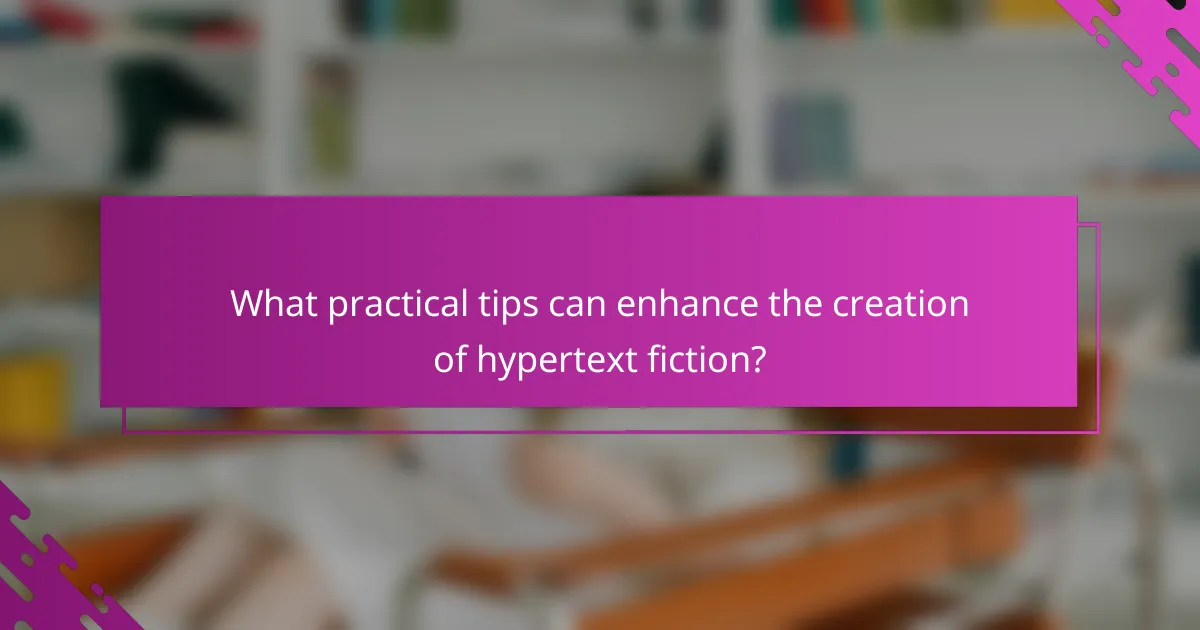
What practical tips can enhance the creation of hypertext fiction?
To enhance the creation of hypertext fiction, focus on interactivity, narrative structure, and reader engagement.
1. Design branching narratives that allow readers to make choices, creating a personalized experience.
2. Use hyperlinks strategically to connect themes, characters, and plot points for deeper exploration.
3. Incorporate multimedia elements like images, audio, or video to enrich the storytelling experience.
4. Maintain clarity in navigation to prevent reader confusion and ensure a smooth journey through the text.
5. Experiment with non-linear storytelling to challenge traditional narrative forms and engage readers in unique ways.
How can writers effectively structure their hypertext narratives?
Writers can effectively structure hypertext narratives by creating interconnected paths that enhance reader engagement. Focus on a clear central theme, allowing readers to explore various perspectives and outcomes. Use concise, meaningful links that guide the reader through the narrative without overwhelming them. Incorporate multimedia elements to enrich the storytelling experience and provide context. Emphasize unique attributes of characters or settings to maintain interest and foster emotional connections.
What strategies can improve user experience in hypertext fiction?
Improving user experience in hypertext fiction involves enhancing interactivity, narrative structure, and accessibility. Strategies include creating intuitive navigation, offering diverse pathways, and ensuring responsive design. Engaging multimedia elements can also enrich storytelling, while user feedback mechanisms help refine the experience.
